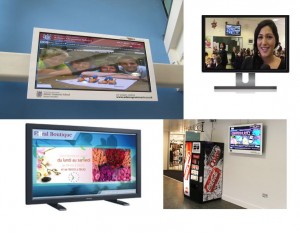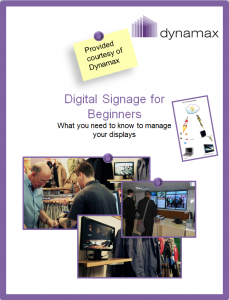In the digital signage industry, we claim that ”content is king” because it’s the content that attracts attention, drives engagement and leads to action. After having chosen the right hardware and software and the right screens placement you don’t want to nulify your investment by failing to capture your audience’s attention because of your content.
Here’s a short list of pitfalls liable of decreasing the impact of your communications:
1) Stale content. Perhaps nothing makes people ignore a screen more than outdated ”news” displayed for weeks or months. Digital signage is all about timely communications so ”yesterday’s news” might be good for other media but not for this one. Make sure your content is always fresh, relevant and eye-catching;
2) Not involving the team. You don’t have to, but we strongly recommend that you involve several persons in using the system and generating content. The HR & Sales department might have important things to share with their peers or others within the company. Digital signage would thus represent a platform for their respective messages. Your employees might have original ideas and resources that would boost your content’s attractiveness and efficiency. So why ignoring their potential?
3) Lack of user policies. Involving the team is good but not regulating their activities isn’t. For avoiding abuse, misuse or leak of confidential information make sure you:
– make two lists mentioning the types of content that can and respectively cannot be displayed;
– assign admin rights. Within digitalsignage.NET you can assign the following user types:
- Administrator – controls the whole network
- Simple user- control, media uploads, specified channels and Playlists.
You can have several administrators if you wish and you can allow users to control certain zones of your screens only (with Player Local Playlists, users can add content to your main playlist or control a playlist of their own).
If you want the content to be reviewed and approved before it’s published, ensure that the persons creating the content are not the ones revising it.
4) Not reusing your existing content. This will help you start get started with digital signage. You must have archived photos, website content, presentations, already created videos and ads that are ready for display, whose message serves the goal of your digital signage system (promote a product, send employees communications etc).
5) Reusing the wrong type of content. Digital signage has its own peculiarities, it doesn’t addresses a ”captive audience”, as people are usually on-the-move when seing your screen. Therefore, the message needs to be short and snappy for maximum impact. Avoid long videos or wordy messages.
6) Using audio at the wrong time & place. Audio can be an attention grabber but also a nuisance. An Immedia study showed that half of British consumers have walked out of a store because they couldn’t stand the music (Screenmedia Expo, 2011). Identify the times when silence is more useful- as during meetings, classes (for schools) or in already noisy environments, for example.
7) Forgetting the CTAs. After having gained share-of-mind, the ultimate goal of your content is to influence its viewers. Not telling them what to do next means that your message has missed its goal, bringing you no benefit at all. ”Buy a product, request more information, scan a QR code, visit a website, get a special offer, attend a meeting, fill in a form”- are all examples of CTAs that will help you reach your objectives.
Your screens’ content must be worthy to share, either via word of mouth, social media, mobile devices etc. Leaving technology aside, the message is the element that will catch people’s attention and will encourage them to act. Because content is currency, make sure it’s of good quality.
Want to learn more? Download our white paper.




Pingback: Tips for place-based media. | digitalsignage.NET
Pingback: Out of home advertising- best practice | digitalsignage.NET
Pingback: Creating content simply and easily | digitalsignage.NET